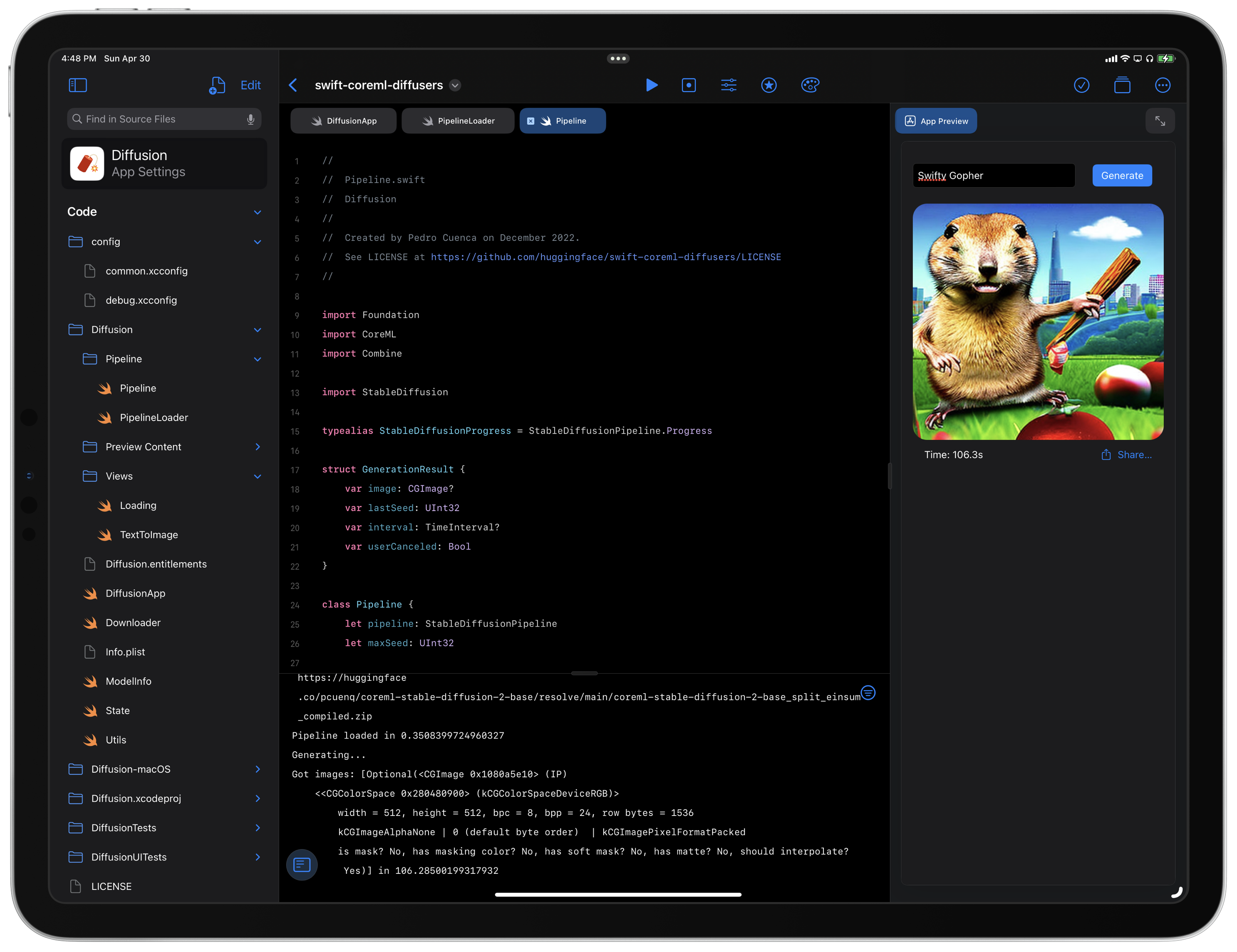This repository is a fork of https://github.com/huggingface/swift-coreml-diffusers and is a Swift Playgrounds App project, so you can open and run this app in Swift Playgrounds on iPadOS.
- Clone this repository
- To clone, I recommend using Working Copy or a-Shell (
lg2command).
- To clone, I recommend using Working Copy or a-Shell (
- Open swift-coreml-diffusers.swiftpm with Swift Playgrounds
- Run
This is a native app that shows how to integrate Apple's Core ML Stable Diffusion implementation in a native Swift UI application. The Core ML port is a simplification of the Stable Diffusion implementation from the diffusers library. This application can be used for faster iteration, or as sample code for any use cases.
This is what the app looks like on macOS:

On first launch, the application downloads a zipped archive with a Core ML version of Stability AI's Stable Diffusion v2 base, from this location in the Hugging Face Hub. This process takes a while, as several GB of data have to be downloaded and unarchived.
For faster inference, we use a very fast scheduler: DPM-Solver++, that we ported to Swift from our diffusers DPMSolverMultistepScheduler implementation.
The app supports models quantized with coremltools version 7 or better. This requires macOS 14 or iOS/iPadOS 17.
- macOS Ventura 13.1, iOS/iPadOS 16.2, Xcode 14.2.
- Performance (after the initial generation, which is slower)
- ~8s in macOS on MacBook Pro M1 Max (64 GB). Model: Stable Diffusion v2-base, ORIGINAL attention implementation, running on CPU + GPU.
- 23 ~ 30s on iPhone 13 Pro. Model: Stable Diffusion v2-base, SPLIT_EINSUM attention, CPU + Neural Engine, memory reduction enabled.
See this post and this issue for additional performance figures.
Quantized models run faster, but they require macOS Ventura 14, or iOS/iPadOS 17.
The application will try to guess the best hardware to run models on. You can override this setting using the Advanced section in the controls sidebar.
The easiest way to test the app on macOS is by downloading it from the Mac App Store.
You need Xcode to build the app. When you clone the repo, please update common.xcconfig with your development team identifier. Code signing is required to run on iOS, but it's currently disabled for macOS.
Performance on iPhone is somewhat erratic, sometimes it's ~20x slower and the phone heats up. This happens because the model could not be scheduled to run on the Neural Engine and everything happens in the CPU. We have not been able to determine the reasons for this problem. If you observe the same, here are some recommendations:
- Detach from Xcode
- Kill apps you are not using.
- Let the iPhone cool down before repeating the test.
- Reboot your device.
- Allow additional models to be downloaded from the Hub.
